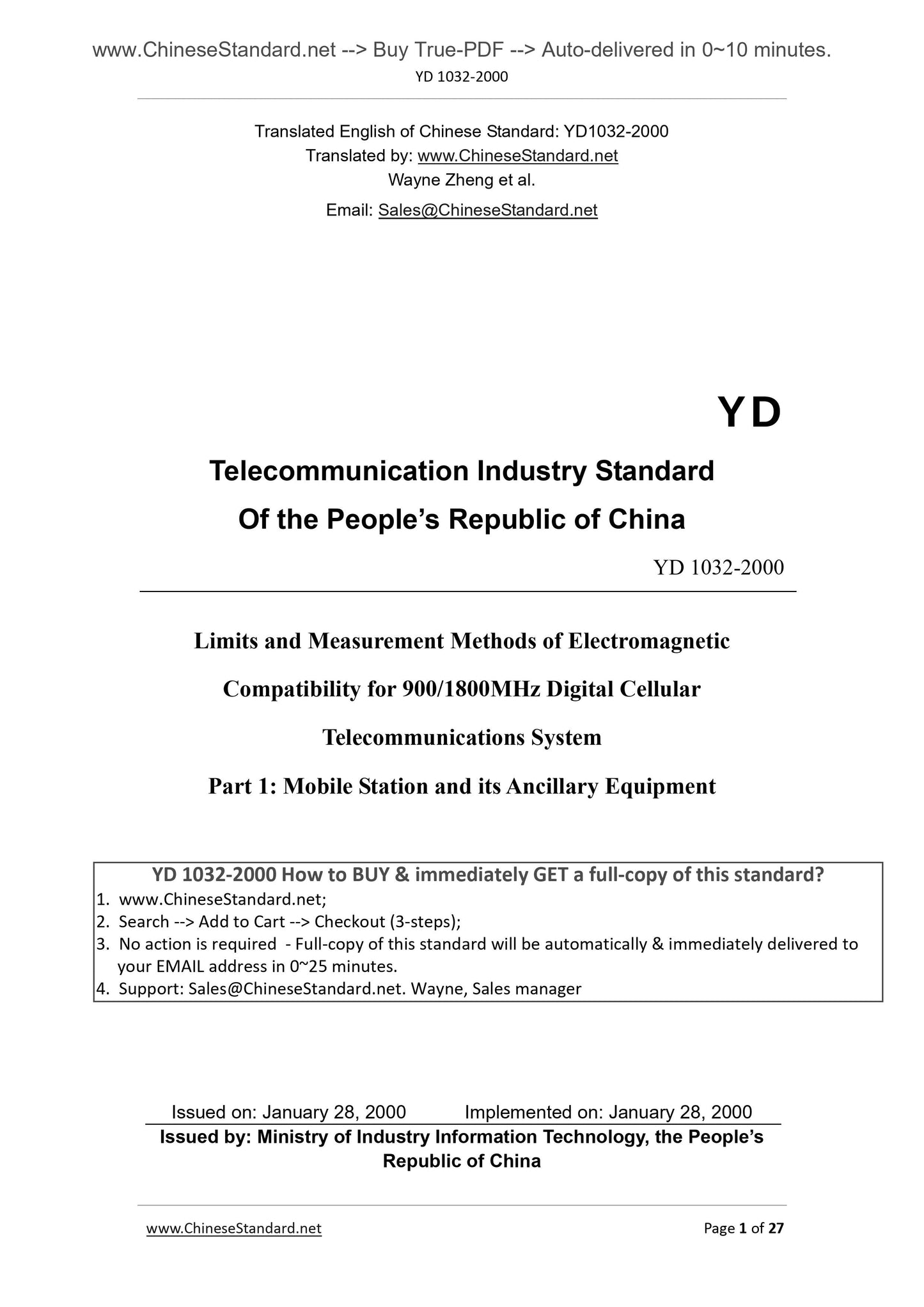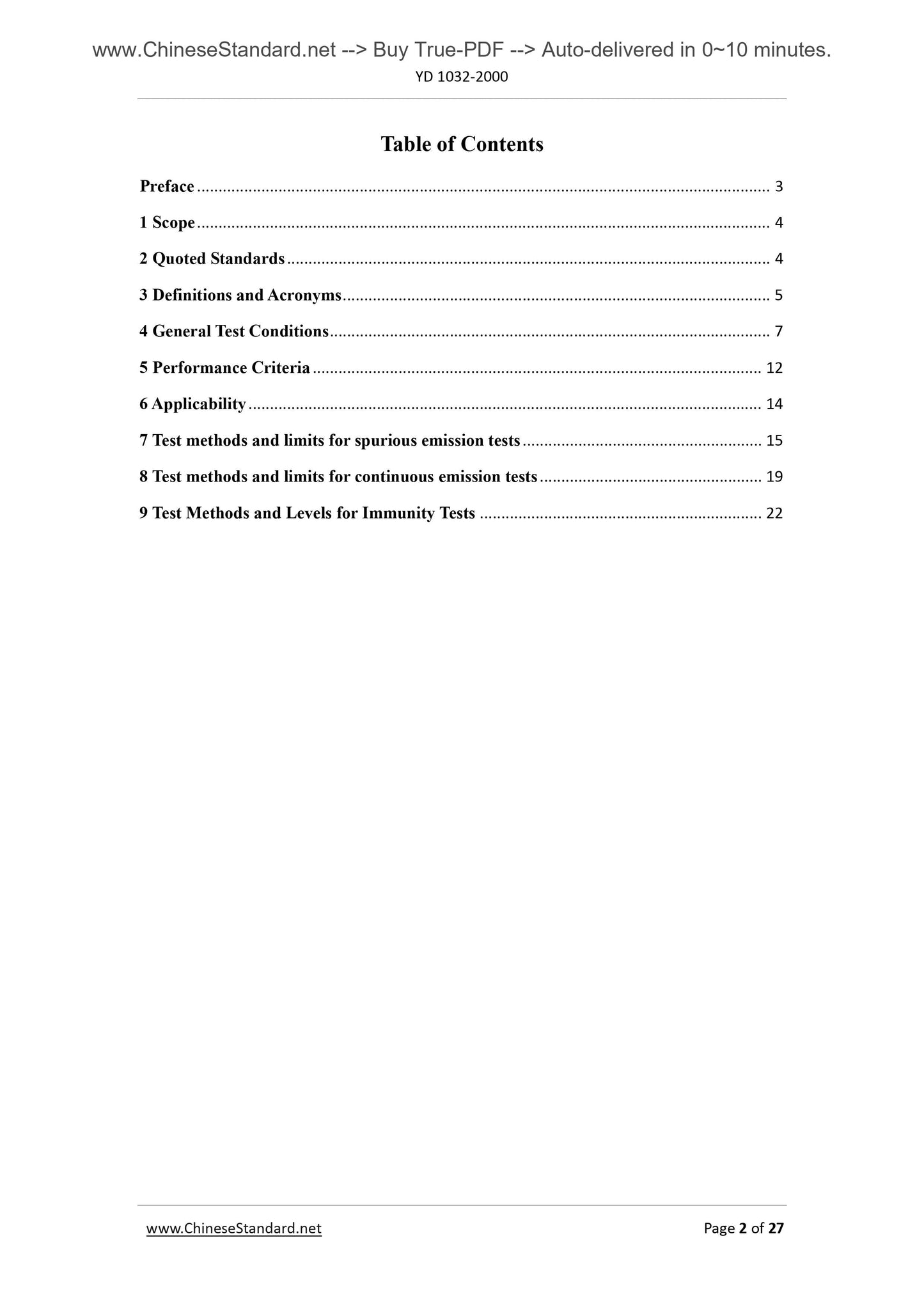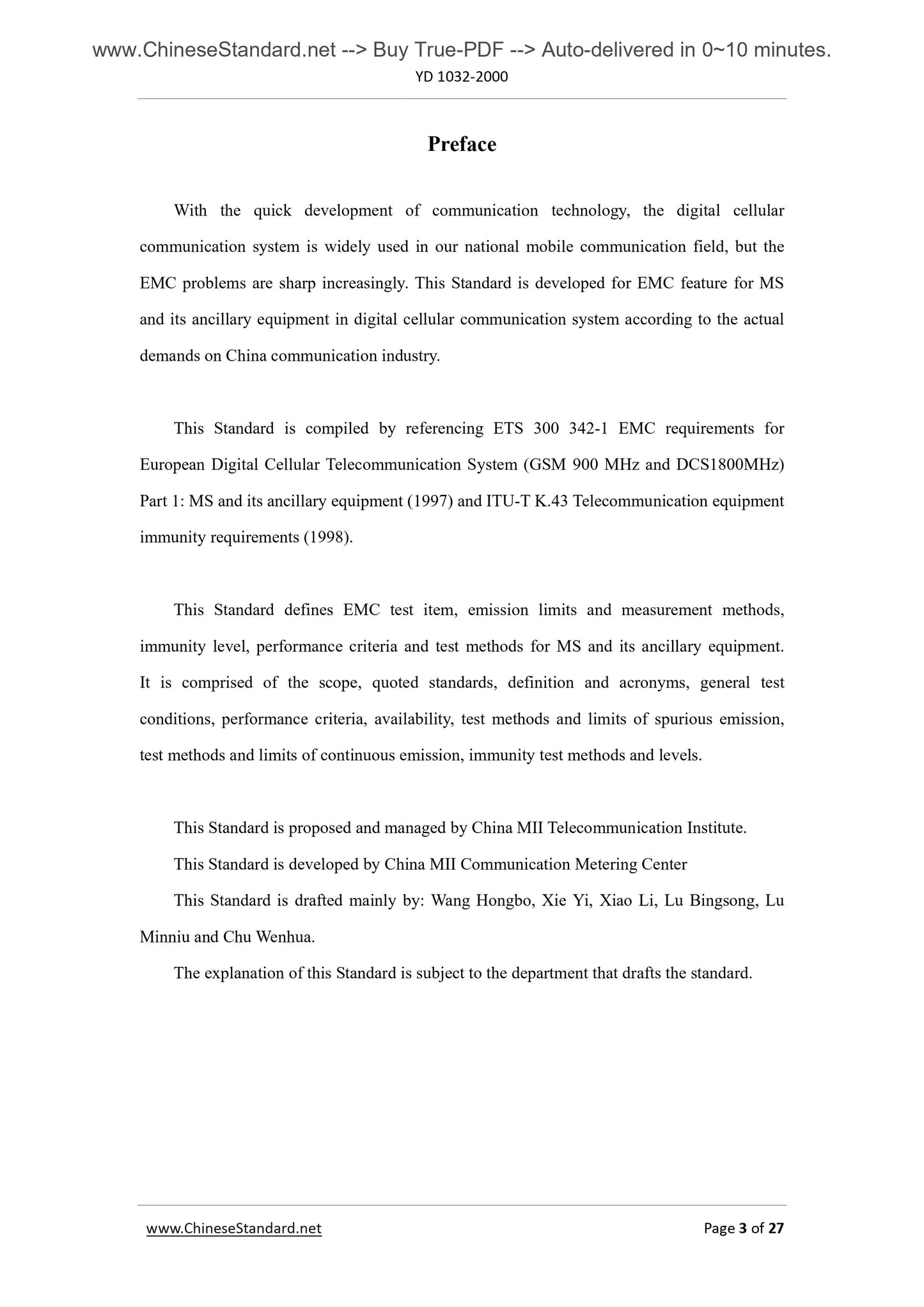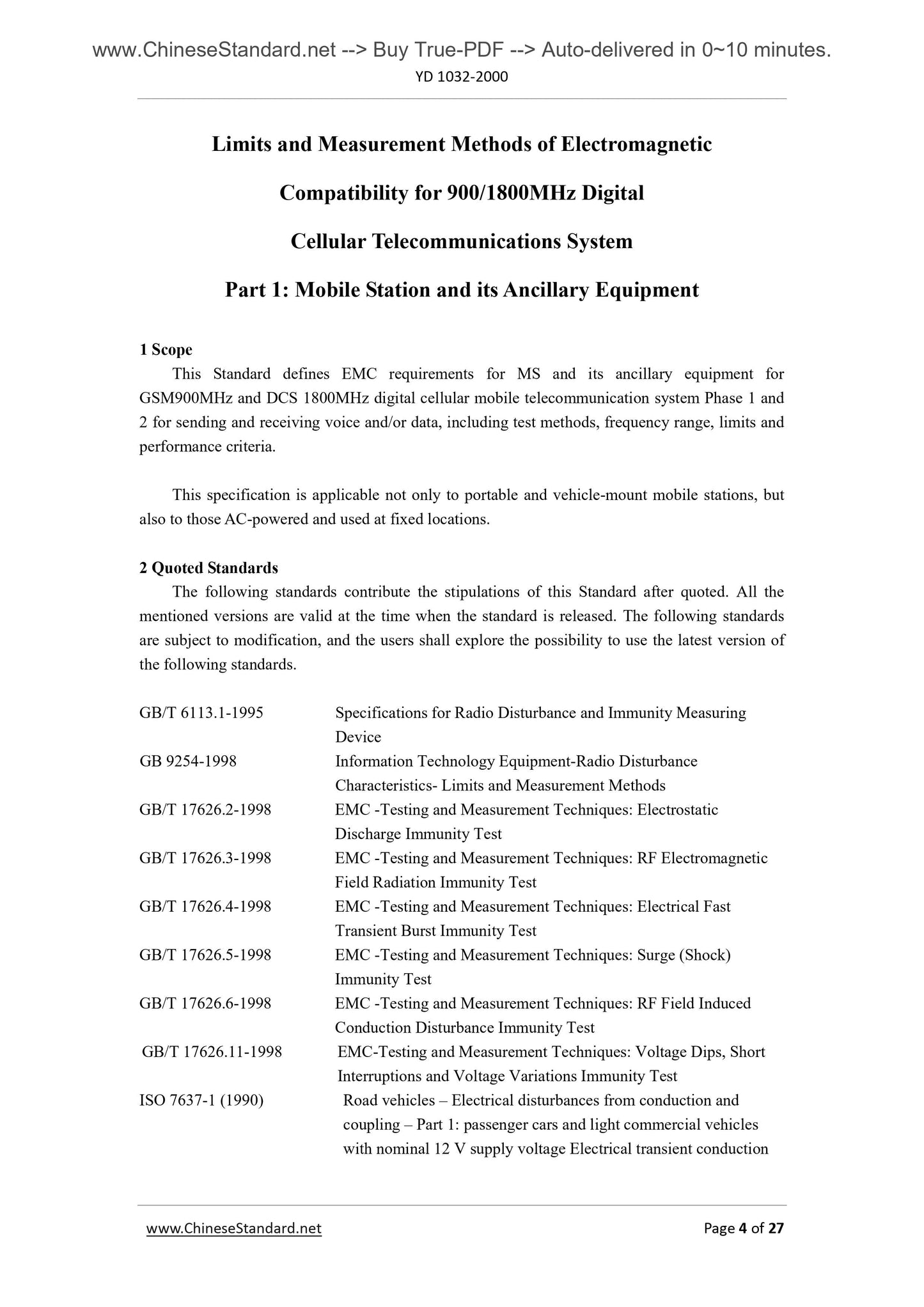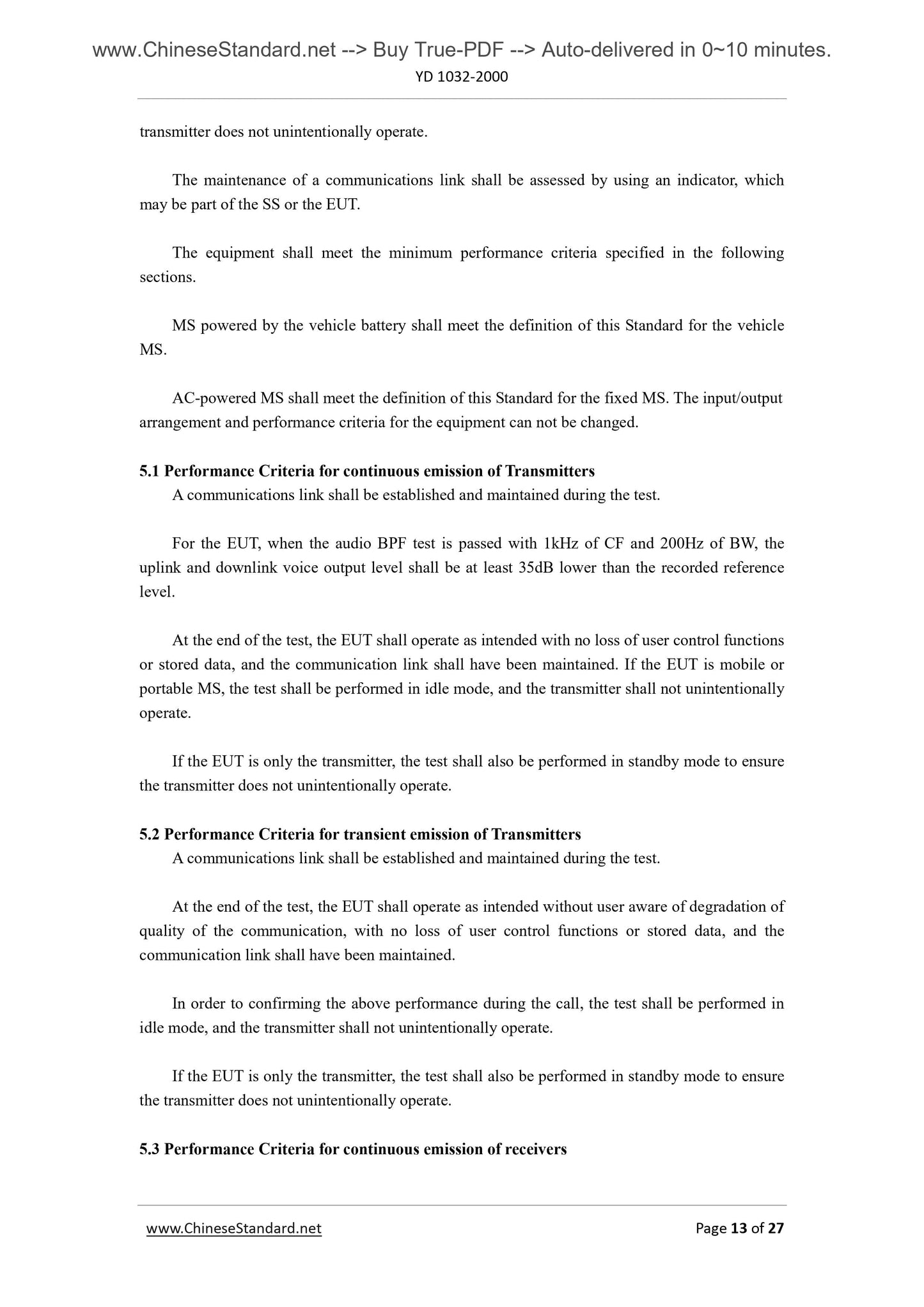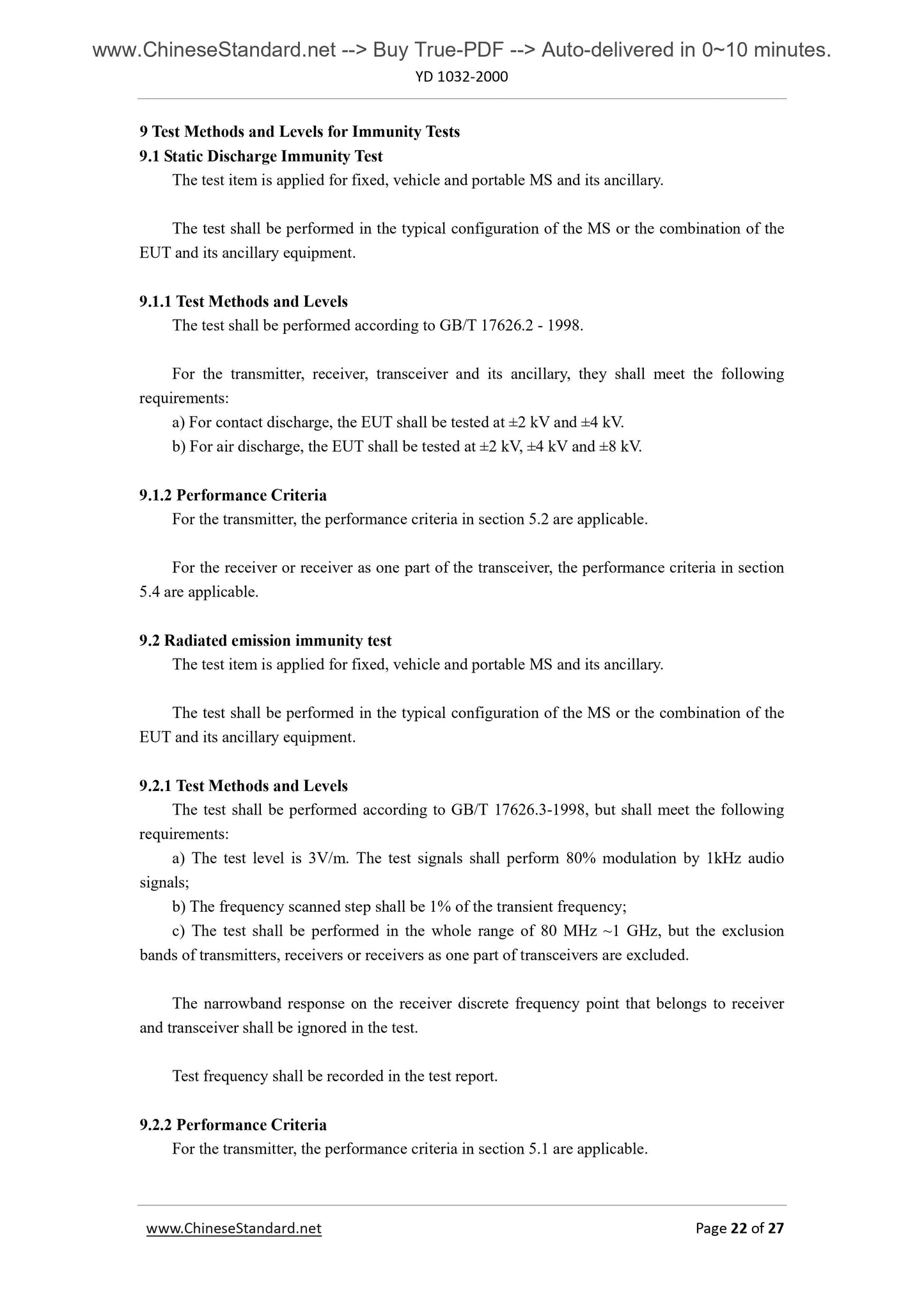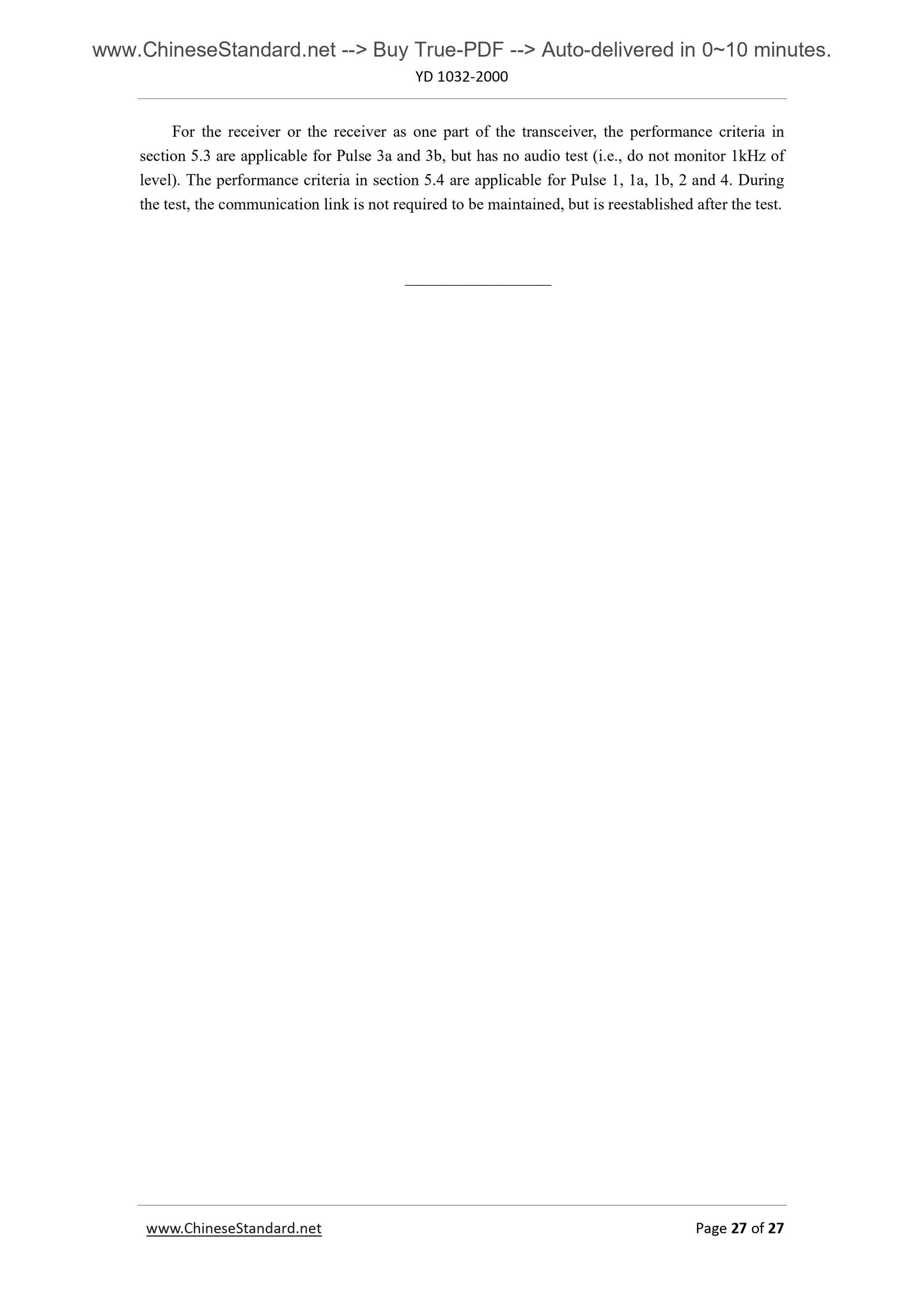1
/
of
7
www.ChineseStandard.us -- Field Test Asia Pte. Ltd.
YD 1032-2000 English PDF
YD 1032-2000 English PDF
Regular price
$145.00
Regular price
Sale price
$145.00
Unit price
/
per
Shipping calculated at checkout.
Couldn't load pickup availability
YD 1032-2000: [YD/T 1032-2000] Limits and Measurement Methods of Electromagnetic Compatibility for 900/1800MHz Digital Cellular Telecommunications System - Part 1: Mobile Station and its Ancillary Equipment
Delivery: 9 seconds. Download (and Email) true-PDF + Invoice.Get Quotation: Click YD 1032-2000 (Self-service in 1-minute)
Newer / historical versions: YD 1032-2000
Preview True-PDF
Scope
This Standard defines EMC requirements for MS and its ancillary equipment forGSM900MHz and DCS 1800MHz digital cellular mobile telecommunication system Phase 1 and
2 for sending and receiving voice and/or data, including test methods, frequency range, limits and
performance criteria.
This specification is applicable not only to portable and vehicle-mount mobile stations, but
also to those AC-powered and used at fixed locations.
Basic Data
| Standard ID | YD 1032-2000 (YD1032-2000) |
| Description (Translated English) | [YD/T 1032-2000] Limits and Measurement Methods of Electromagnetic Compatibility for 900/1800MHz Digital Cellular Telecommunications System - Part 1: Mobile Station and its Ancillary Equipment |
| Sector / Industry | Telecommunication Industry Standard |
| Classification of Chinese Standard | M37 |
| Word Count Estimation | 19,169 |
| Date of Issue | 2000-01-28 |
| Date of Implementation | 2000-01-28 |
| Adopted Standard | ETS 300 342-1-1997; NEQ; ITU-T K.43-1998; NEQ |
| Summary | This standard specifies: send and receive voice and/or data the first and second phases of GS, 900MHz and DC, 1800MHz digital cellular communication system a mobile station (MS) and its auxiliary equipment Electromagnetic Compatibility (EMS) requirements, the method comprising measuring the frequency range limits and performance criteria. This standard applies to: portable and vehicle-mounted mobile station, also applies to the AC power supply and use in a fixed location mobile station. |
Share
